Cold Fermented Pizza Dough Recipe{for crispy and airy crust}
If you desire a crispy, light, and beautifully bubbled pizza crust, then this cold fermented pizza dough recipe is destined to become your favorite.
While it does require some extra time for bulk fermentation, the end result justifies every moment of waiting. The outcome is a wonderfully bubbly and airy crust, a level of perfection unattainable with a mere overnight fermentation.
Moreover, this pizza dough boasts a delightfully earthy flavor that elevates the overall taste experience far beyond that of quick and hasty pizza dough recipes.
For those with the patience to savor the process, this cold-fermented pizza dough recipe promises an exquisite flavor that you will genuinely relish every minute of anticipation.
Table of Contents
What is cold fermentation?
Cold fermentation involves bulk fermenting the dough at lower temperatures.
During fermentation, yeast consumes carbohydrates in the dough, producing carbon dioxide and alcohol.
This process is key to developing a rich and intricate flavor in the dough.
The longer you allow the dough to cold ferment, the more gas becomes trapped within it, resulting in an airy and delightfully bubbled crust.
What are the benefits of cold Fermentation?
1. More flavourful dough- If you’re used to making quick and simple pizza dough, you might notice they often taste strongly of yeast.
But with cold-fermented pizza dough, there’s no overpowering yeast taste. That’s because most of the yeast ferments slowly over two days, giving the dough a pleasant, aromatic flavor.
2. Doubles up as a way to store pizza dough- With this method, your pizza dough can be put to good use over a 5-day period.
It becomes usable after two days of fermentation and remains suitable for pizza-making up until days 5 or 6.
At what temperature should one cold ferment pizza dough?
Ideally, pizza dough should be cold fermented at temperatures between 15-17°C for a duration of 2-3 days.
However, since most of us don’t have a fridge that can maintain such high temperatures(most fridges don’t go beyond 5°C ), we can opt for cold fermentation in the refrigerator, which means longer fermentation time.
The primary difference is that cold fermentation in the fridge will take a bit longer, typically around 3-5 days.
If you happen to have a cool room or reside in a location where the ambient temperature hovers around 15-17°C, you can certainly carry out the cold fermentation right there.
But in hot climates, it’s advisable to go with refrigerator fermentation. It might take a bit more time, but rest assured, the dough will indeed undergo fermentation.
It’s important to note that just because the fridge is colder or the dough doesn’t rise as visibly as you might expect, it doesn’t mean fermentation isn’t happening.
How long should one cold ferment?
The longer, the better. However, there is one point worth noting here: the fermentation depends on the strength of the dough.
During cold fermentation, yeast produces a significant amount of gas within the flour. If the flour doesn’t have enough strength to contain this gas, the dough may eventually collapse.
This is a concern similar to overproofing, which you should prevent.
So, what do you do to avoid this?
It is best to use strong flours with protein content between 12.5-13.5 percent.
Many 00 flours out there do not specify the protein content; hence, it gets a little difficult to know which one is ideal for cold fermentation.
You can select Caputo flour in that case, as it has different options for protein content. The brand will not make a difference; just be sure of the protein content.
The flour I used was from a local shop, and they have a good 12.5 percent protein content flour, which works well with cold fermentation.
If your flour has a lower percentage of protein, like, say, 12-12.5 percent, then do not cold ferment it for a very long time. No more than four days.
Cold Fermented Pizza Dough Recipe
1. Take the water in the bowl and add salt to it. Mix it till the salt dissolves completely.

2. Now add a few tablespoons of flour from the total 300 grams of flour and mix it in the water to get a pancake batter-like mixture. We do this step so the yeast doesn’t come in direct contact with salt.
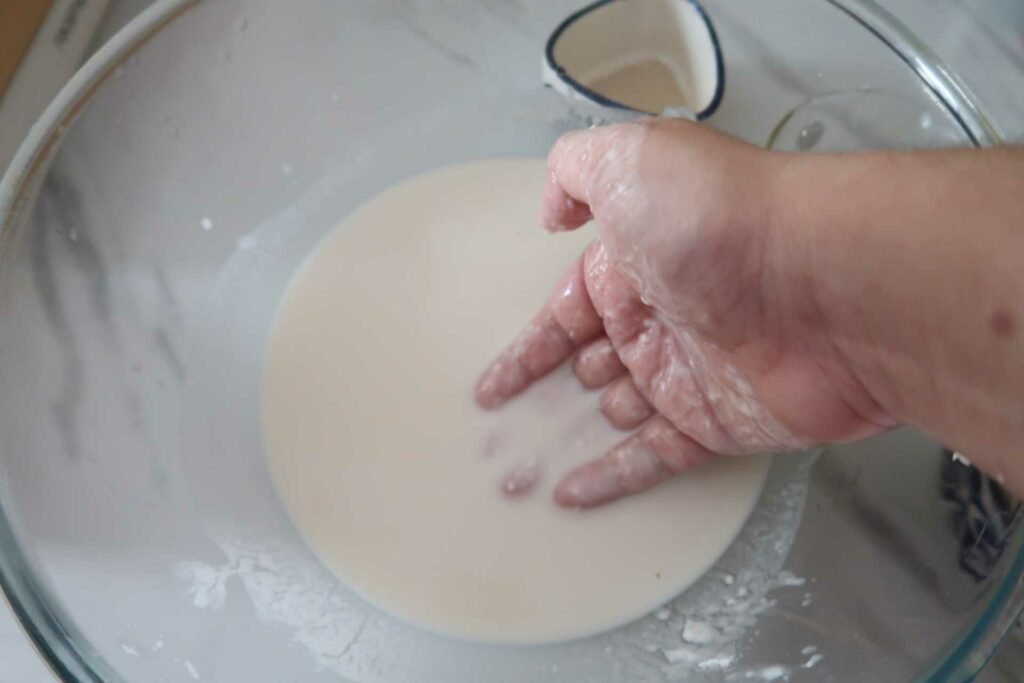
3. Now add yeast and mix it in the water.
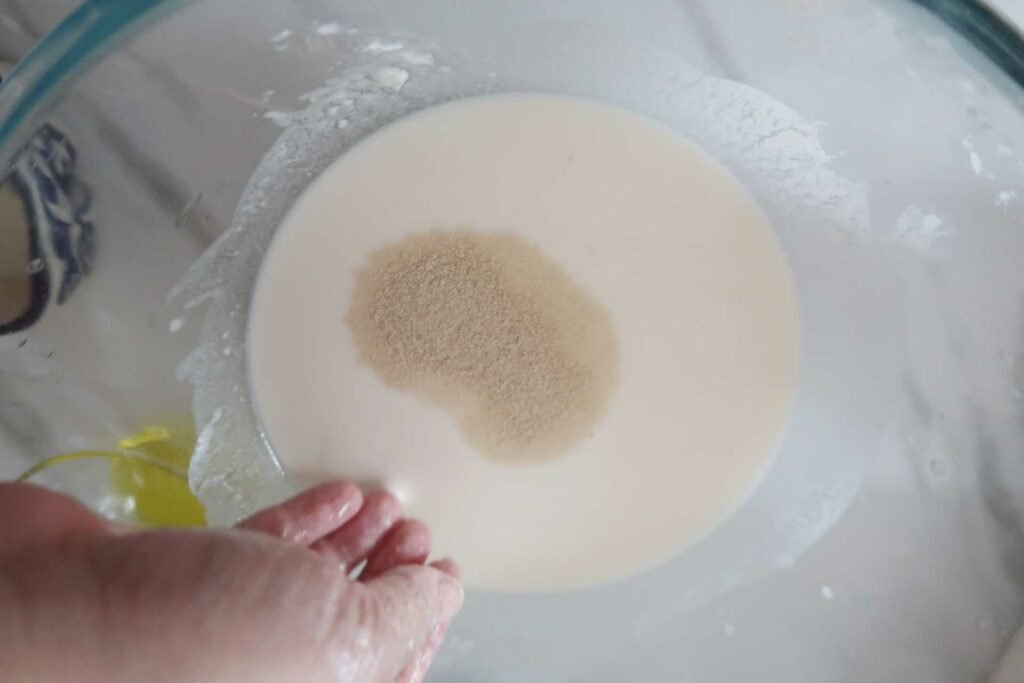
4. Add the rest of the flour and start mixing the dough till you get a homogenous dough. Once you get that, let the dough rest for an hour.

5. After an hour, it is time to knead the dough. Knead the dough on a flat surface till you get the dough all smooth and shiny. I use a bit of olive oil on my hands to knead the dough; you can also use dry flour for easy handling when kneading the dough.

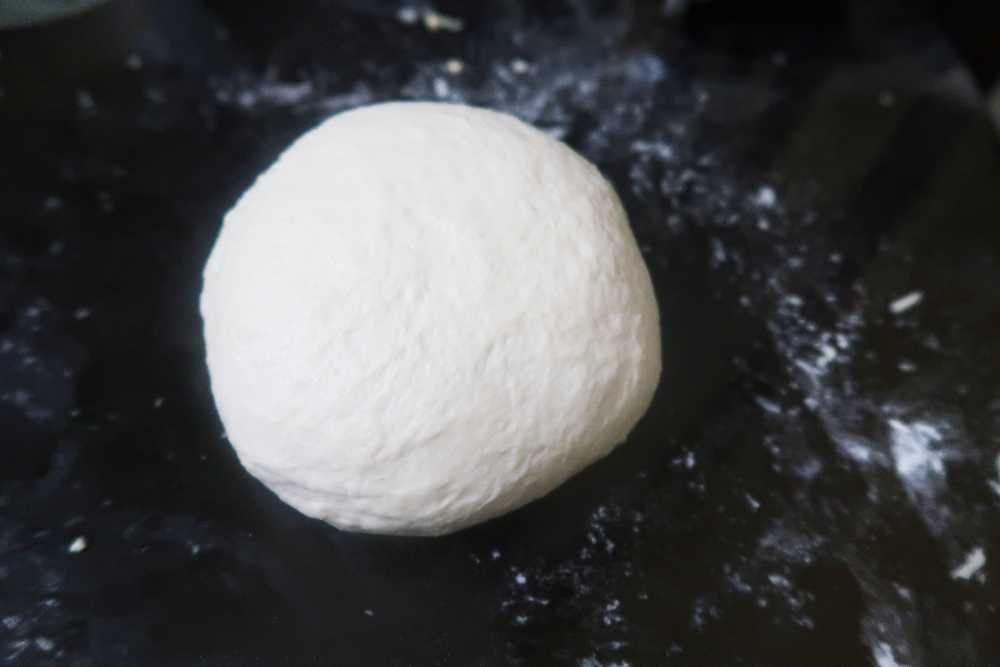
6. Once you get a smooth dough ball, divide it into even balls and store them in an airtight container in the refrigerator.

7. Let them sit there for a minimum of two days.
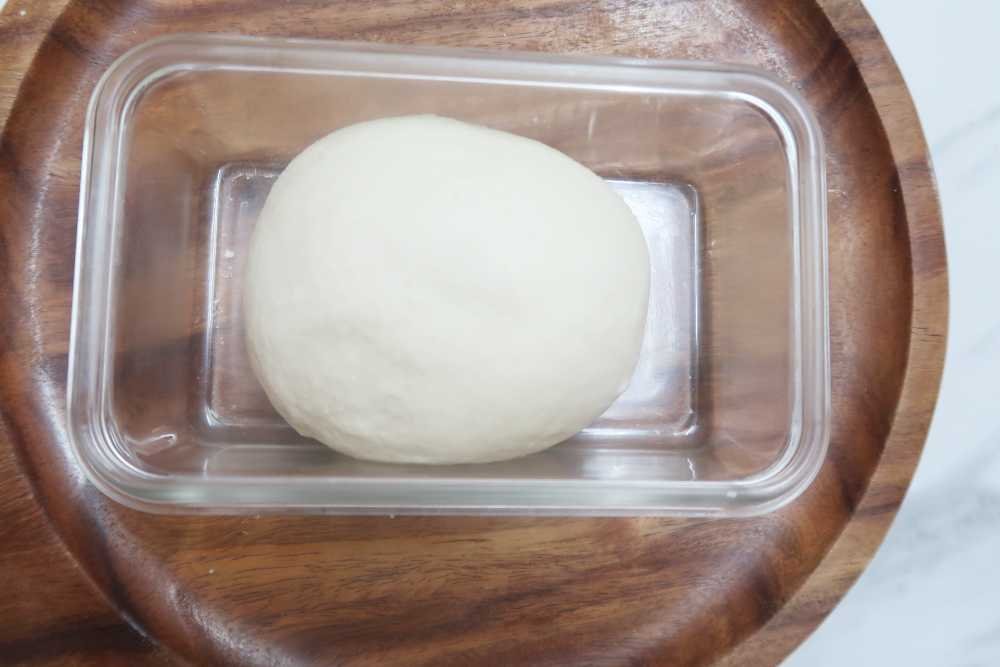

When you are ready to use them to make pizzas, take them out and let them sit at room temperature till the dough comes to normal room temperature, which in my case is 35 degrees Celsius. DO NOT OVERPROOF IT.
Once it has reached room temperature and is no longer cold to touch, you can start stretching it out to make a pizza.
How much Yeast do you use for cold fermentation?
Since you are fermenting the dough for a long time, the amount of yeast you need is very little. I have used 0.3-0.8 percent (baker’s percentage) of active instant yeast.
Cold fermentation doesn’t require a lot of yeast. I see people using a lot of yeast, but using just half a tbsp or one-quarter sometimes is enough.
Do not use more than one percent yeast, and that translates to if you are using 100 grams of flour, then you use one gram of yeast, which is a lot of yeast.
You should use no more than 2 grams of yeast for 500 grams of flour, which is 0.4 percent.
I hope this clears up how much yeast to use.
While talking of yeast, one should also consider what kind of yeast you are using; if you are using fresh yeast, then you need to use double the quantity of what you would use in case of using active instant yeast.
Since active instant yeast is readily available, I mostly use that in all my recipes, including this one.
Hydration of the dough
If you are using flour with high protein content in the range of 12.5-13.5 percent, then you should keep the hydration to about 60-64 percent.

In this recipe, I have kept the hydration to 64, but I sometimes even do a 62 percent hydration, which is pretty good.
Stick to the 60-65 percent range for easy management of the dough. You can go up to 70 if you want higher hydration, but remember the dough will be difficult to manage.
Olive Oil
If you are cooking with an Ooni pizza oven or in a proper wood-fired pizza oven, then you do not need olive oil. However, I use olive oil while kneading the dough and not as an ingredient.
You can use flour to help you easily knead dough or some olive oil in your palms. I use olive oil and sometimes flour. Both do the job well.
How to cook the Pizza at home?
I use a cast iron pan and an oven in broiler mode. I initially stretch out the pizza and top it with pizza sauce and mozzarella cheese that is homemade.
Then add toppings of your choice and cook the pizza in the cast iron pan on the stove.
This gets the bottom all crispy.


Now, the top is still uncooked, and I use the broiler settings and place the pizzas as close to the broiler as possible using the metal stand attachment and cook the pizza at 200 degrees Celsius for another ten minutes.
Side Note- I need to practice stretching the pizza dough, as I’m clearly not that great at it at the moment.
This gives a nice pizza with that crispy and bubbly crust that tastes outstanding.
It won’t even look like it was made in a home oven and would give that wood-fired pizza oven look, so make sure to try out this way of cooking your pizza.
Another option is to have an outdoor pizza oven that goes up to 500-600 degrees Celsius or above, then cook this pizza for about 5 minutes in it, and you are good to go.

Cold Fermented Pizza Dough Recipe
Equipment
- 1 Cast Iron Pan (for cooking the pizza)
- 2 Weighing scale (to measure ingredients)
- 3 Convection oven (with broiler mode)
Ingredients
- 300 grams 00 Flour -I used 12.5 percent protien content
- 192 ml Water
- 1/4 tbsp Yeast
- 6 grams Salt – 2 percent salt
- 1 tbsp Olive Oil – not used while making the dough but during kneading
Instructions
- Take all the water mentioned in a bow and add salt to it. Make sure that the salt dissolves completely in water.
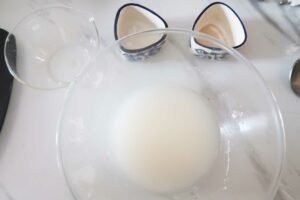
- Add 2-3 tbsp of flour into the mix and stir it well to create a pancake batter like mixture with an almost even consistency(there can be little lumps but htat doesnt )matter.

- Now add the yeast in this flour batter that you made and stir it well.
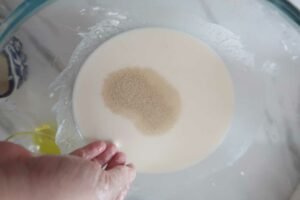
- Add the rest of the flour into the bowl and start mixing with a wooden spoon or hand till you get a nice homogenous ball.

- Cover it and let it rest for about 1 hour.

- Take the dough out and start kneading it by stretching it out and folding the dough back in again, repeating this process mutliple times.

- Once you get a smooth dough ball(kneading should be done for 8-10 minutes) you can stop kneading. The dough should bounce back when you press your finger on it.

- You can cold ferment this batch as it is or seperate them into dough balls and then store them in an air tight container in the refrigerator for 2-5 days. If you have a cold room with a temperature of 15-17 degree celsius then you can keep it there for 2-3 days.

- When the dough is ready and you want to cook pizzas, take it out of the refirgerator and make sure it reaches room temperature. Then stretch the dough and top it with sauce, toppings, cheese and cook it in an oven.





